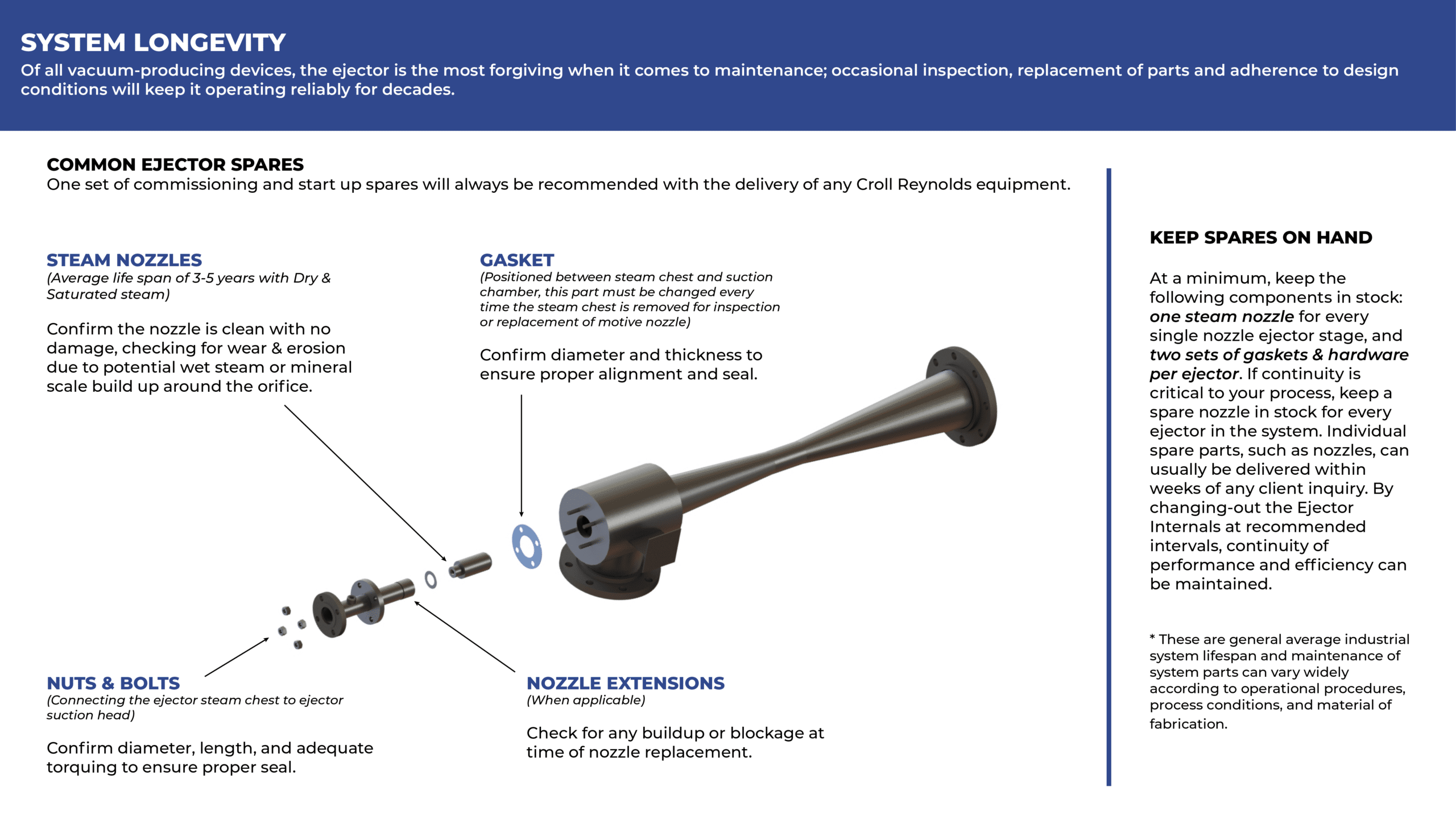Problem: Firestone Fibers and Textiles Company, a division of Firestone Tire and Rubber Company, manufactures tire and industrial yarns of polyester and nylon-6. Nylon-6 molding and extrusion resins are also produced at the plant in Hopewell, Virginia. The process for making polyester requires an extremely high vacuum on the polymerization reactor. A consistent polymerization vessel vacuum of 0.3 mm Hg is needed, but the existing vacuum source, a five-stage steam jet ejector, could only provide a 0.5 mm Hg level.
Two options were considered when the company decided to replace the original system with a system designed for 0.15 mm Hg with a non-condensible gas load of 10.8lb/hr. A new five-stage jet ejector system to meet these requirements would use 1395 lb/hr of 100 psig steam. The other option was a hybrid vacuum source composed of a three-stage steam ejector system and a liquid ring vacuum pump that is more energy efficient than ejectors for low vacuum applications.
Solution: The hybrid system was selected because the three-stage jet ejector would use only 1240 lb/hr of 100 psig steam. The liquid ring vacuum pump would increase the material and installation cost of the system by about $4000, but the savings in steam consumption would pay back the added cost in less than two years.
The new vacuum system was installed in October, 1979. The three-stage steam jet ejector system is jacketed so that hot thermal vapor can prevent icing in the jets, which can occur at very high vacuums, and also to prevent deposition of trace amounts of residual polyester byproduct contained in the gas stream. Steam and other condensibles in the gas stream from the jets are removed in a spray-type condenser which uses about 300 gpm of water from a cooling tower.
The liquid ring vacuum pump installation includes a recirculating water system for the sealing liquid. The “closed loop” system consists of a 15 gal reservoir and a heat exchanger where the sealant water is cooled to about 60°F before it is returned to the vacuum pump. A steady vacuum in the 0.3 to 0.5 mm Hg range is maintained on the polymerization vessel by bleeding low pressure steam into the vacuum line ahead of the first jet of the three-stage ejector system.
Results: The jet ejector/liquid ring vacuum pump system has provided both the capacity and the extremely low vacuum needed for the polyester polymerization vessel, after making a small modification. The inability of the system to maintain consistent vacuum control on the polymerization vessel during the summer months was corrected by installing a larger heat exchanger for cooling the vacuum pump sealant.
The hybrid vacuum source is reliable, requires only routine maintenance, and will continue to save substantial amounts of steam each year compared to the fivestage steam jet ejector.
By: Al Lockwood, Supervisory Process Engineer – Firestone Fibers and Textile Co. Hopewell, Virginia and Al Gaines, Sr Associate Editor


